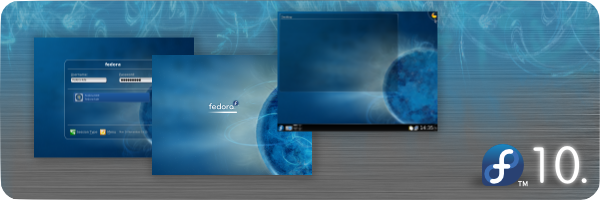(→KDE) |
|||
| Line 31: | Line 31: | ||
During the default login process, you can use the "Session" menu to choose a KDE login instead of a GNOME login. You will be asked if you wish to make KDE your default desktop. | During the default login process, you can use the "Session" menu to choose a KDE login instead of a GNOME login. You will be asked if you wish to make KDE your default desktop. | ||
You can make KDE the system-wide default desktop. | You can make KDE the system-wide default desktop. This is not necessary in order to use KDE, and may affect other users on the system. There are several ways to make KDE the default desktop - GUI and command line tools and manually editing system configuration file. | ||
=== GUI=== | |||
Use your favourite package management tool (yum, kpackagekit) to install <code>system-switch-displaymanager-gnome</code>, run the <code>system-switch-displaymanager</code> command and select KDM. | |||
=== Command line === | |||
Use your favourite package management tool (yum, kpackagekit) to install <code>system-switch-displaymanager</code> and run the <code>system-switch-displaymanager kdm</code> command. | |||
=== Manual way (unsupported) === | |||
Add the following line to <code>/etc/sysconfig/desktop</code>: | |||
<pre> | <pre> | ||
Revision as of 13:20, 16 December 2008
KDE
The K Desktop Environment (KDE) is a powerful desktop environment. It is available in Fedora as an alternative to the GNOME desktop and other window managers.
Getting Fedora KDE Desktop Edition
Fedora 10 KDE Desktop Edition is available at Get Fedora section of the official home page.
You can also download default Fedora 10 and follow Installing KDE topic.
Installing KDE
You will have the option of installing KDE during the Fedora installation process.
You can also install KDE packages after installation using the command line or the package manager of your choice.
To install KDE using the command line, execute the following as root:
yum groupinstall KDE
In Fedora 10 you might get an error that there is no group called KDE. To install KDE in Fedora 10+, execute the following as root:
yum groupinstall "KDE (K Desktop Environment)"
Using KDE
During the default login process, you can use the "Session" menu to choose a KDE login instead of a GNOME login. You will be asked if you wish to make KDE your default desktop.
You can make KDE the system-wide default desktop. This is not necessary in order to use KDE, and may affect other users on the system. There are several ways to make KDE the default desktop - GUI and command line tools and manually editing system configuration file.
GUI
Use your favourite package management tool (yum, kpackagekit) to install system-switch-displaymanager-gnome, run the system-switch-displaymanager command and select KDM.
Command line
Use your favourite package management tool (yum, kpackagekit) to install system-switch-displaymanager and run the system-switch-displaymanager kdm command.
Manual way (unsupported)
Add the following line to /etc/sysconfig/desktop:
DESKTOP="KDE"
The default display manager on Fedora is GDM - The GNOME Display Manager. You can switch this to KDM - The KDE Display Manager. This has little impact on the end-user experience, and isn't necessary in order to use KDE. To make KDM the default display manager, add the following line to /etc/sysconfig/desktop:
DISPLAYMANAGER="KDE"
Fedora's KDE SIG
The KDE SIG (Special Interest Group) is a group of Fedora contributors that maintain popular KDE packages.
KDE Spin
Fedora 7 has merged Core and Extras and the broader community now has better access to packages. Fedora 7 and above includes a KDE spin.
Links
- http://www.kde.org/ - Home of the K Desktop Environment


